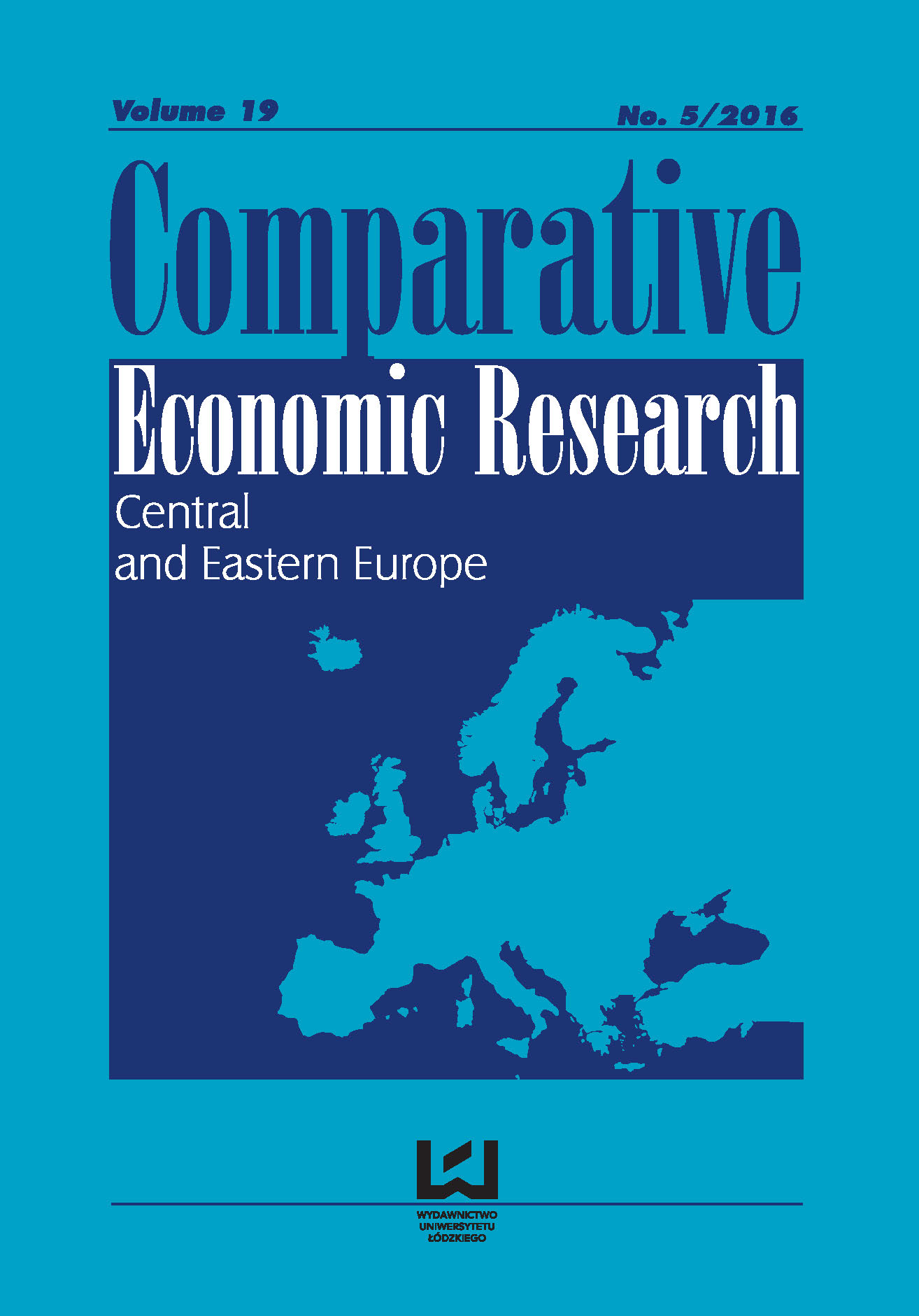Analysis Of The EU Anti-dumping Policy In Terms Of The Revealed Comparative Advantages
DOI:
https://doi.org/10.1515/cer-2016-0037Keywords:
antidumping, trade policy, revealed comparative advantages, chattinessAbstract
Anti-dumping policy is an important instrument of trade policy as far as protecting markets against dishonest practices of foreign suppliers is concerned and it is compliant with international regulations such as e.g. these set by the World Trade Organisation. Generally, dumping concerns exporting commodities at lower prices than a selling price of commodities (so-called normal value). Anti-dumping policy uses appropriate preventive means against dishonest practices in a situation when:
- commodity was brought to customs territory of an importing country at dumping prices,
- import inflicted damage (or threatens to do it) to importing country’s industry.
The first principles of anti-dumping policy were formulated in 1964 at the United Nations Conference and Development UNCTAD. The agreement was signed by 194 countries, including Poland. A similar agreement was also signed by the European Union countries. One of the types of agreements is tariff agreements in which a tool used as a system of cataloguing commodities in international trade is so-called Combined Nomenclature (CN). The system is used in customs proceedings and for registration needs. Anti-dumping proceedings also use HS classification system formulated by the World Customs Organization.
The aim of the paper is to determine the proportion of goods covered by anti-dumping proceedings in the value of import conducted by the European Union between 1995–2012. In the empirical research the eight-digit commodity codes CN8 were used as well as HS2 codes that allow grouping imported commodities covered by anti-dumping proceedings by their manufacturing divisions. In that way a determined classification of commodities was used to describe a comparative advantage. To conduct assessment the modified Ballasa index (Bi) and Grupp/Legler index were used. The result of conducted analysis is determination of groups of commodities that are crucial for export of a given country.
Downloads
References
Bown Ch. P. (2010). Taking Stock of Antidumping. Safeguards and Countervailing Duties. 1990–2009. ʻThe World Economyʼ, Vol. 34. Issue 12.
Google Scholar
Faustino H.C. (1991), On the controversy between Ballance-Forstner-Murray and Bowen about measuring comparative advantage, ʻEstudos de economiaʼ, Lisboa. Vol. 11.
Google Scholar
Khatibi A. (2009), The trade effects of European antidumping policy, ʻECIPE working paperʼ, No. 07.
Google Scholar
Kuna-Marszałek A. (2007), Postępowanie antydumpingowe jako instrument protekcji, Uniwersytet Łódzki. Łódź.
Google Scholar
Leromain E., Orefice G. (2013), New Revealed Comparative Advantage Index: dataset and empirical distribution, ʻCEPII Working Paperʼ, No. 2013–20.
Google Scholar
Bown Ch. P.. Global antidumping database. www.worldbank.org.
Google Scholar
Raporty Komisji Europejskiej Anti-dumping anti-subsidy safeguard. Statistics covering. 1996–2013.
Google Scholar
Rozporządzeń Komisji Europejskiej. ec.europa.eu
Google Scholar
Eurostat. http://epp.eurostat.ec.europa.eu/newxtweb/mainxtnet.do
Google Scholar
www.wto.org
Google Scholar
Nomenklatura Scalona. Dz. U. Unii Europejskiej. 31.10.2013.
Google Scholar
Procedures related to the implementation of a common trade policy. Notification of the initiation of anti-dumping proceedings concerning import of biodiesel coming from the USA Dz. U. C 147 of 13.06.2008; Procedures related to the implementation of a common trade policy. Notification of the initiation of anti-dumping proceedings concerning import of biodiesel coming from the USA Dz. U. C 345 of 25.11.2011; Procedures related to the implementation of a common trade policy. Notification of the initiation of anti-dumping proceedings concerning import of biodiesel coming from the USA Dz. U. C 260 of 29.08.2012.
Google Scholar
Downloads
Published
How to Cite
Issue
Section
License

This work is licensed under a Creative Commons Attribution-NonCommercial-NoDerivatives 4.0 International License.











